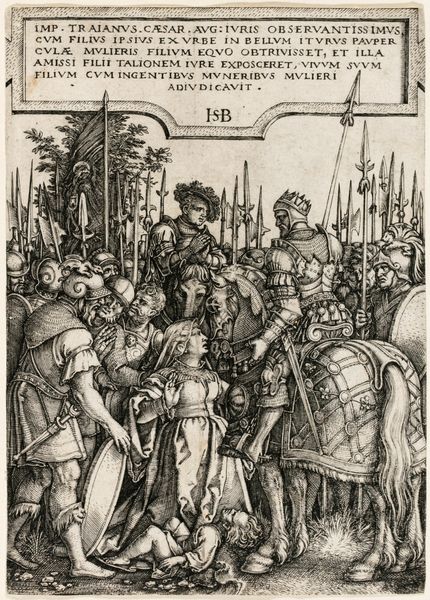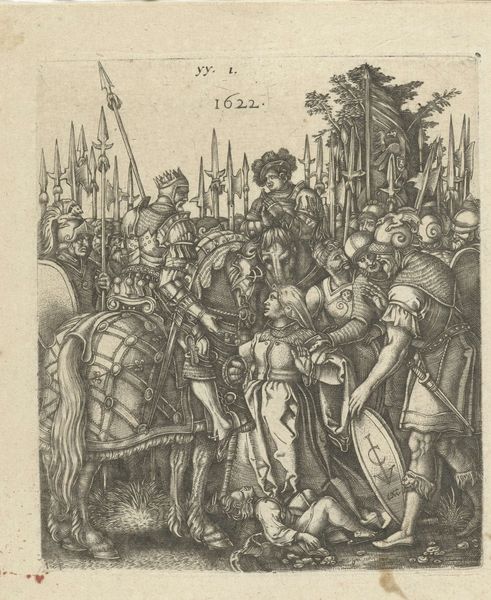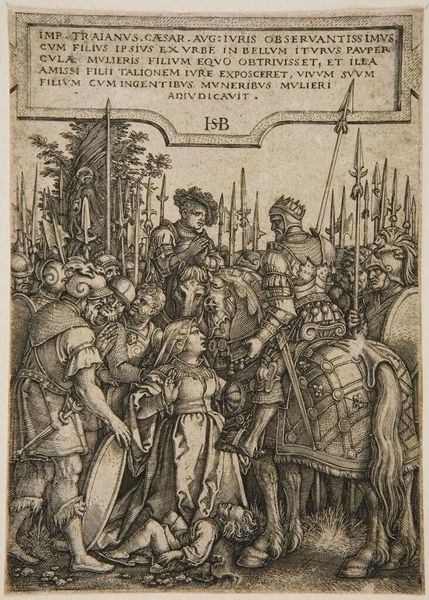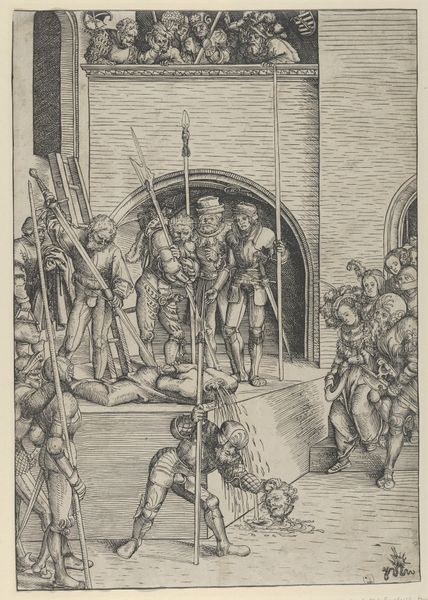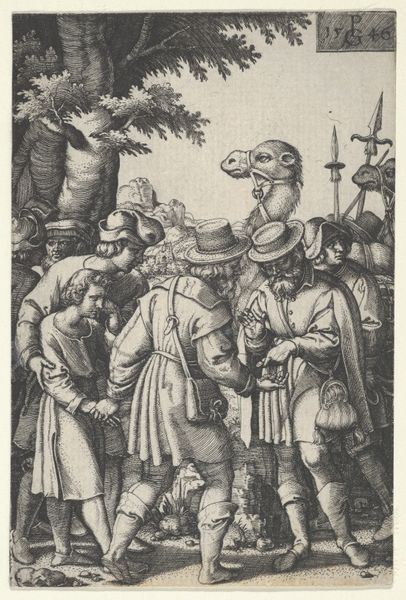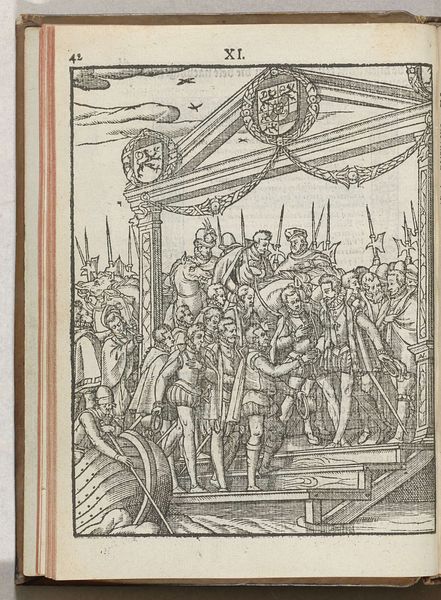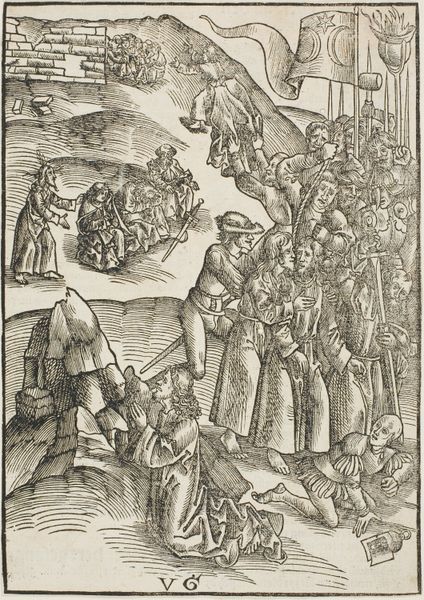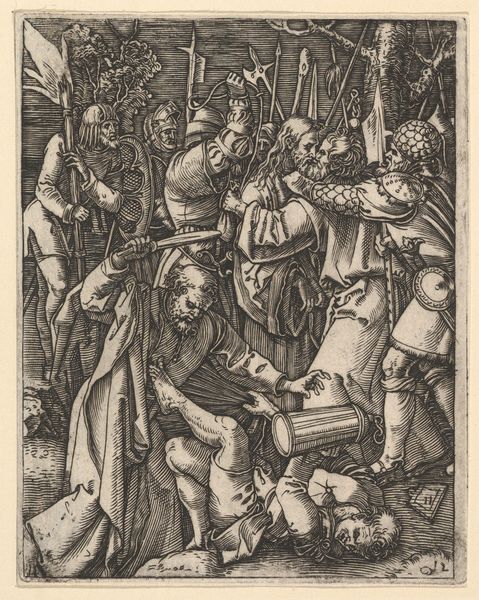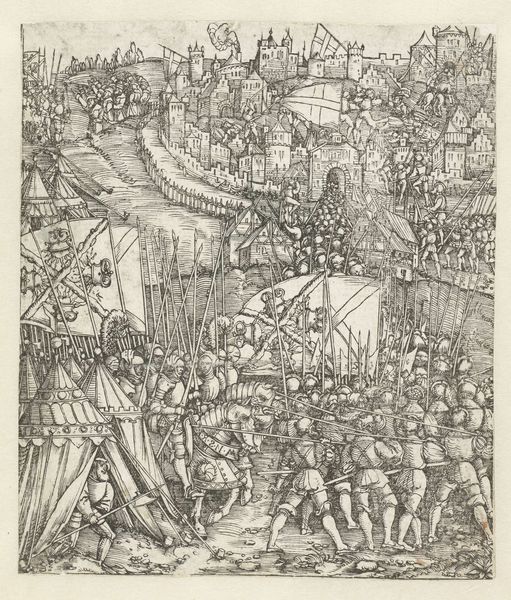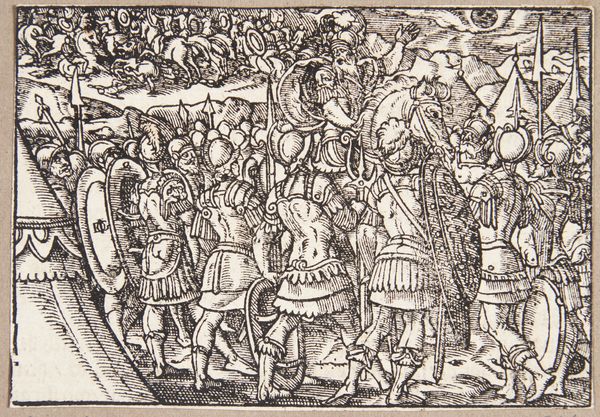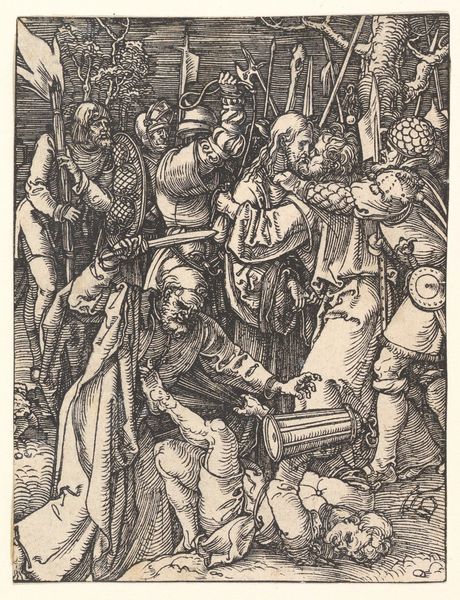
print, engraving
#
narrative-art
# print
#
figuration
#
form
#
line
#
history-painting
#
northern-renaissance
#
engraving
Copyright: National Gallery of Art: CC0 1.0
Editor: Here we have Sebald Beham's "The Judgment of Trajan," an engraving from 1537. It's incredibly detailed! What stands out to me is the sheer number of figures, all packed into a relatively small space. How should we interpret this dense scene? Curator: Let's think about the materials involved. Beham chose engraving, a meticulous process involving metal plates. This choice isn't accidental. The very act of engraving – the labor, the precise tooling – mirrors the act of justice being portrayed. Consider the economic implications: who could afford this print, and what statement were they making by possessing it? Editor: So, the print itself becomes a commodity, demonstrating status? Curator: Exactly. And think about the accessibility of print versus, say, a painting. This image could circulate widely, shaping public understanding of justice and power. Notice the idealized figures of Trajan and his entourage compared to the poor mother at the center. What commentary is Beham making about class and access to justice through this deliberate contrast in representation and the print's materiality? Editor: That’s fascinating! The act of making, distributing, and consuming the print becomes part of the story. The lines emphasize textures but almost in a hyperbolic way as to become distracting, I wonder if that relates. Curator: Precisely! The Northern Renaissance was all about the surface. We can think about printmaking not only as a way to disseminate information but also as an important step toward an increasingly interconnected global marketplace. Editor: I’m seeing this artwork in a completely new light now. I hadn't considered the role of materiality and economic factors at all. Curator: It opens up so many avenues for understanding the artwork and its context. Looking closely at the making of a piece can reveal a great deal about its social and cultural significance.
Comments
No comments
Be the first to comment and join the conversation on the ultimate creative platform.
